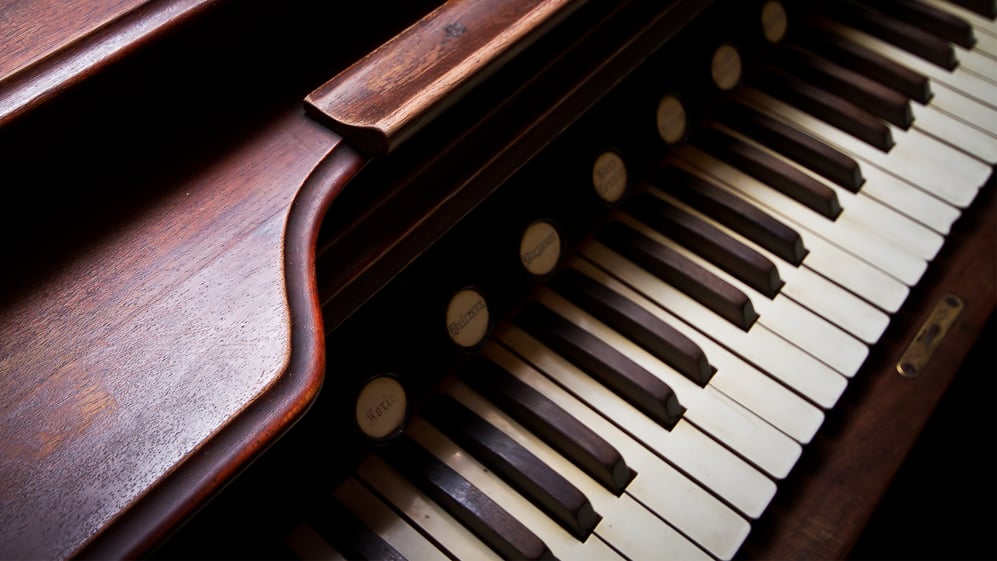I had little to no training in improvisation in my music lessons growing up. This lack of training combined with a predisposition to enjoy sight reading led me to avoid improvising at all costs—participating in jazz band always made me a little nervous.
Improvising Using the Structure of Hymns
These days, I tend to improv when playing one instrument—the organ. Why? When I am playing the organ, it is typically because I am playing for church. When I play for church, I always play hymns. And playing hymns is, I posit, the best introduction to building the skill of improvisation.
Like most skills, it is helpful to start learning improv step-by-step in a structured environment. Hymns offer the ideal avenue for that kind of skill-building.
Hymns provide a solid structure from which to build improv skills, particularly when playing hymns for a congregation to sing. Because of this structure, hymns offer limited improv choices, making them a good first step to learning the skill. A musician working on improv skills can only pick from a few things to try, taking away the overwhelming feeling when faced with unlimited options.
Meter, Melody, and Key
Hymns provide a definite meter and melody that must be followed in order for a congregation to sing along without disruption. When improvising on a hymn, it is generally important to preserve the written meter and melody to encourage good congregational singing. At times, though, making simple metrical changes, perhaps only in the accompaniment, while still retaining the written melody, can be effective improvisation that allows for variety within a many-stanza hymn or helps to illuminate the text at certain points.
In addition to the meter and the melody, the musical key of a hymn, like that of any piece of music, determines how one may improv on it. The key gives a knowledgeable musician anchorage when improvising. Knowing the primary chords of a key—the tonic, dominant, and sub-dominant—as well as how the other steps of the scale and their respective chords fit into a hymn’s harmonization allows one to play with the harmonies or perhaps to change up the harmonization on a stanza or two to give variety or to illuminate the text. Knowing the harmonies also allows one to simply restructure the chords in different ways—for example, playing the melody in the bass while accompanying the upper voices. Often in the final stanzas of well-known hymns, the congregation can competently handle singing the melody while the organist can move from playing the melody to improvising the harmonies in different registers or octaves. This also allows the organist to highlight the text of a hymn in different ways.
Musically Illuminating the Text
After all, the text of the hymn should always be considered when improvising. The text provides a further structure, indicating the feel of the music at any given moment. For example, while listening to an arrangement of “A Mighty Fortress Is Our God” (Lutheran Service Book 656), I noticed that the music was generally triumphant, as befits the text. In the third stanza, however, the music changed so that it was dissonant. The dissonance matched the text: “Though devils all the world should fill, All eager to devour us.” When improvising on a hymn, the text gives further direction as to how the music should sound at any given point.
Simple improvisations made by tweaking the meter, the harmonies, or other small aspects of a hymn aid the congregation in their understanding of the text by aurally explicating the meaning of each stanza. This improvising also allows the organist to offer unexpected beauty, thus also emphasizing the beauty of our hymn texts and the Gospel message they proclaim. Church organists have this wonderful gift at their fingertips—thanks be to God!
Start practicing your improv skills by ordering organ music from the Concordia Publishing House catalog.














.jpg?width=50&height=50&name=IMG_20220621_160541_456%20(1).jpg)
